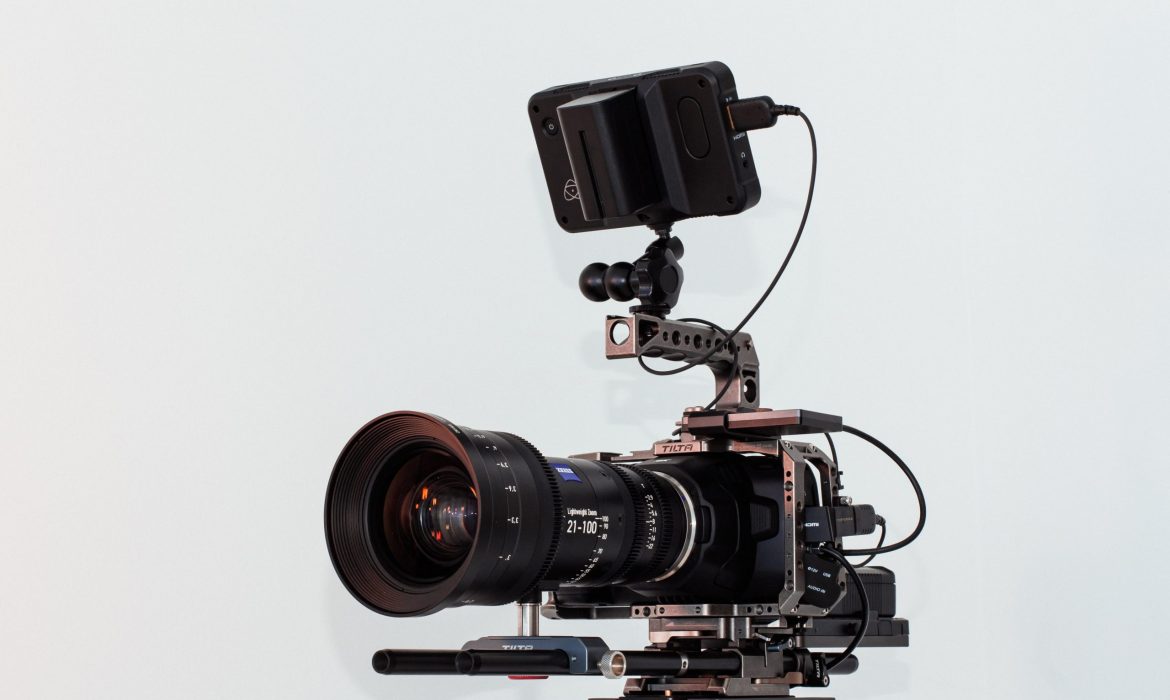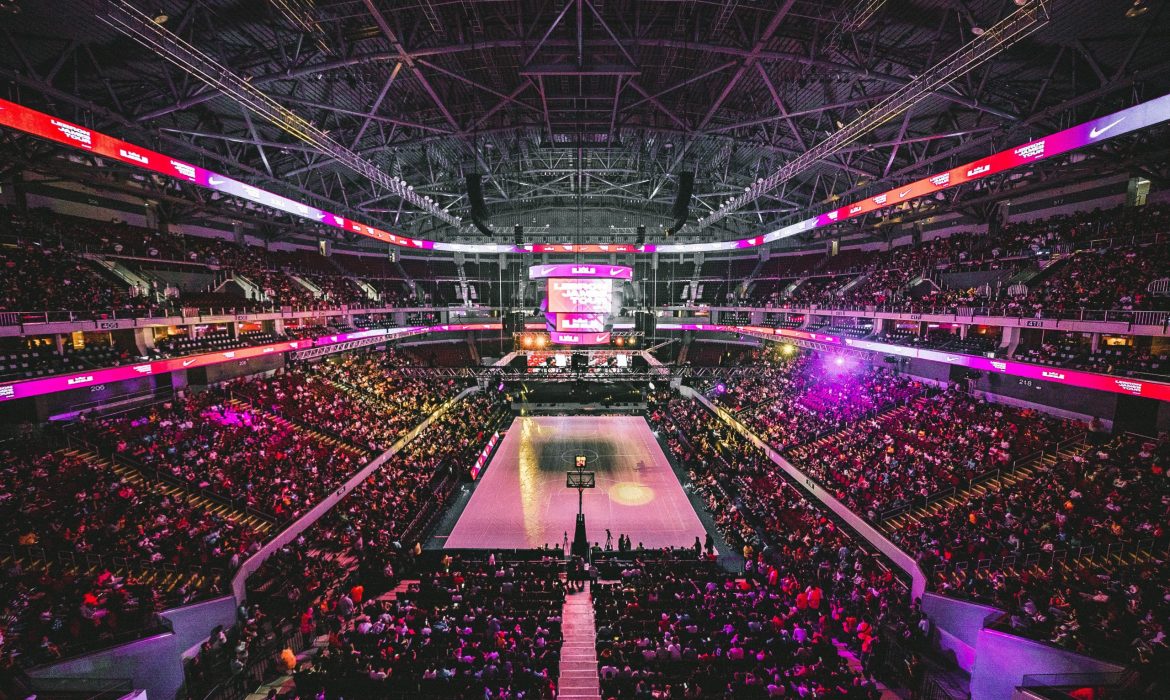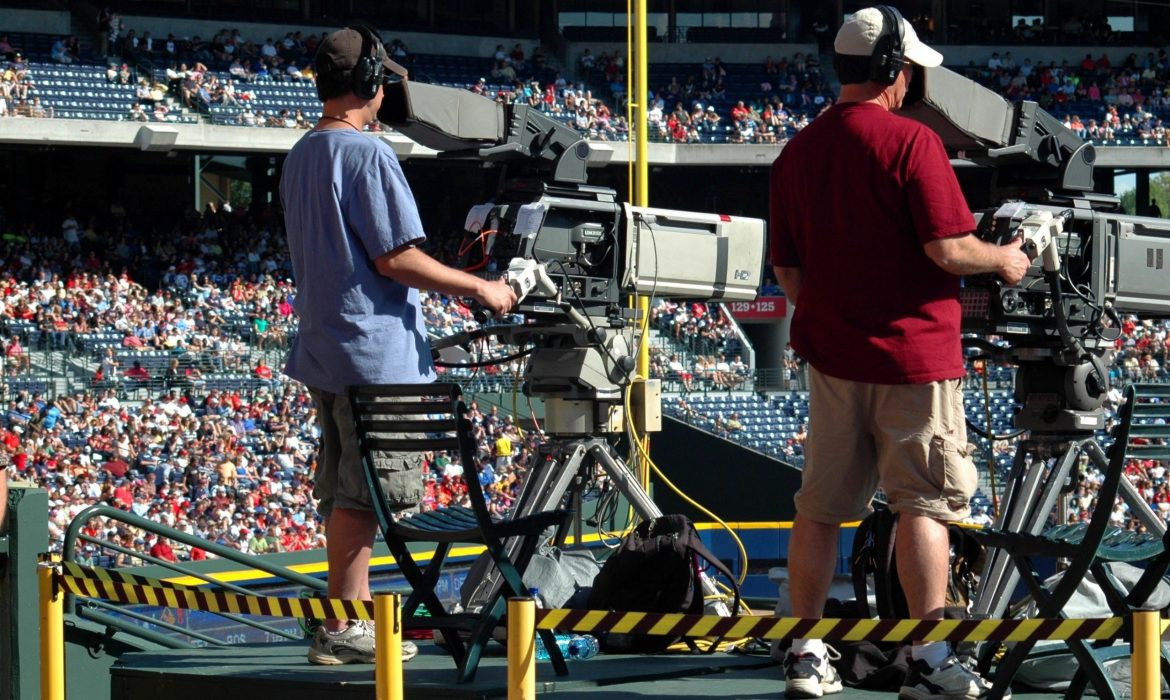Improve your social media stream with different content types
Remember when you had to buy an actual newspaper to see TV schedules? The good old days! Today’s world is completely the opposite, however: TV series, entertainment shows and sports events tempt you from each corner of the internet to watch them.
For broadcasters, this means you cannot simply wait for the viewer to come, because they have too much to choose from and too many other distractions. This leaves many broadcasters struggling for attention – a battle that’s impossible to win unless there is a willingness to adapt and offer more than traditional broadcasting.
Why adapt and offer something different? Let’s take a look.
The shift in attention
The data is ruthless: Gen Zers are rejecting traditional TV in favour of digital media[1]. There’s no doubt, change is in the air and there seems to be no way to reverse it.
But it’s not all doom and gloom – broadcasters just need to be prepared to try different mediums, but also to confront the demands of a different, more picky audience. The truth is that losing a viewer on the web is extremely easy, with potential viewers literally a click away from opening a new tab and moving their attention to a different place.

Broadcasters, especially those with experience in linear TV, are having to deal with this new shift, as well as learn new tools to manage the situation.
Social streaming is a great new tool in the box, but is it enough to grab attention for sustained periods of time? Especially when Gen Zers are notoriously less focused and easily distracted. The great news about Gen Zers though is that they are excellent at multitasking[3], which means they can watch a live stream, write comments and read articles at the same time!
So, if you decide to adapt to this new generation and the shift in attention, what are you going to offer? We already know that a social broadcast shouldn’t be a singular event. But what else should be part of the social broadcasting ecosystem? Next, let’s take a look at the essential ingredients.
The essential ingredients for successful social broadcasting
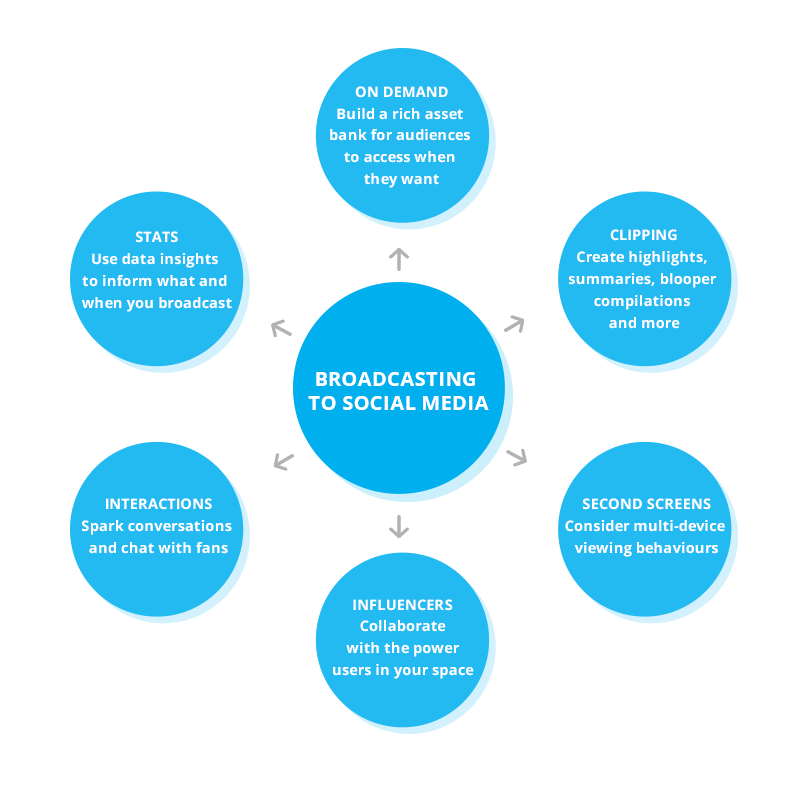
Clipping
This seems like a no-brainer, but it’s worth repeating. When streaming to a social media channel such as Facebook, keep creating and sharing bit-sized clips for those unable to watch the live stream itself. This is great for a number of reasons, as clips will help you to:
- Gain brand visibility inside and outside of your fan base.
- Increase all vital KPIs – views, reach, number of fans etc.
- Develop a rich bank of content you can upload to services like YouTube, Facebook or your own on-demand platform.
- Meet the demands of second screeners – who might be watching your live stream and catching/commenting on your clips, too.
Don’t avoid second screens – provide one!
To ‘second screen’ is to watch content on your TV and, at the same time, use a laptop or smartphone (the second screen) to check what’s going on in your social feeds, to message friends, use an app etc.
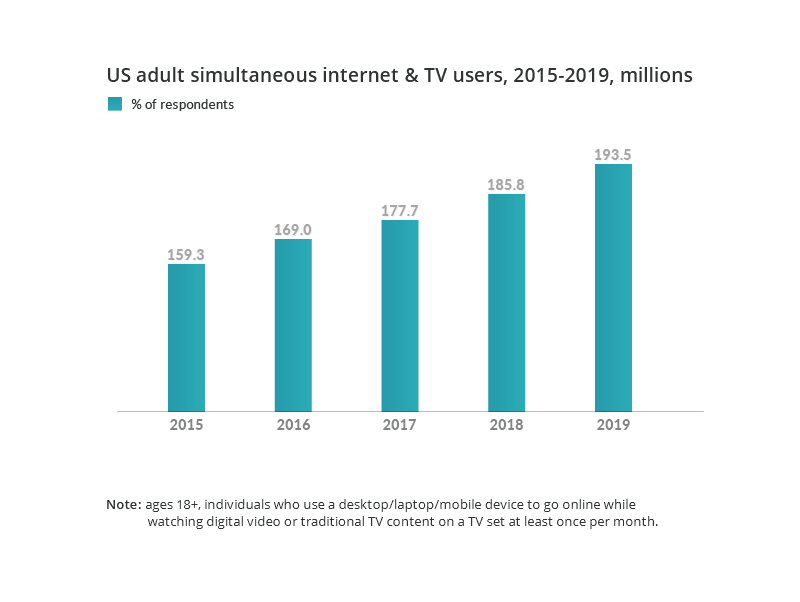
What’s in it for you? Out of 177 million second screeners in the US, 74% of viewers are interacting with unrelated content they see while watching a main event[4]. Your goal should be to make these people eager to see your content, instead of anything else.
Many second screeners are using Twitter to interact with their friends while watching a TV broadcast. They prefer to tweet, because the micro-blogging platform is quick and known for its promptness. Twitter has a 6% higher interaction rate for cross platform viewing among other social media platforms.[5]
The lesson to learn: While broadcasting, whether via a TV channel or a social stream, you should interact with your audience using other platforms. Use Twitter, Facebook or Snapchat and get involved with your audience. If you have your own mobile app, don’t hesitate to use push notifications to grab attention.
Mobile approach
Writing about the necessity of having a mobile app is soooo 2010, right? Well, it isn’t if you still don’t have one or you’re not using it properly. Mobile apps are a great marketing channel, especially if you have enough resources to keep it in good shape and your fan base is big enough to give you a good return on your investment.
How can you use a mobile app while being a broadcaster? You would use it just like any other marketing channel. But it has particular power if you treat it like an extra screen, content distribution tool and video streaming extension.
If you’re broadcasting whole TV programmes, include a calendar in the app, so your viewers can schedule reminders. If you’re streaming singular events, keep your fan base excited with news stories and premium video content available for app users only.
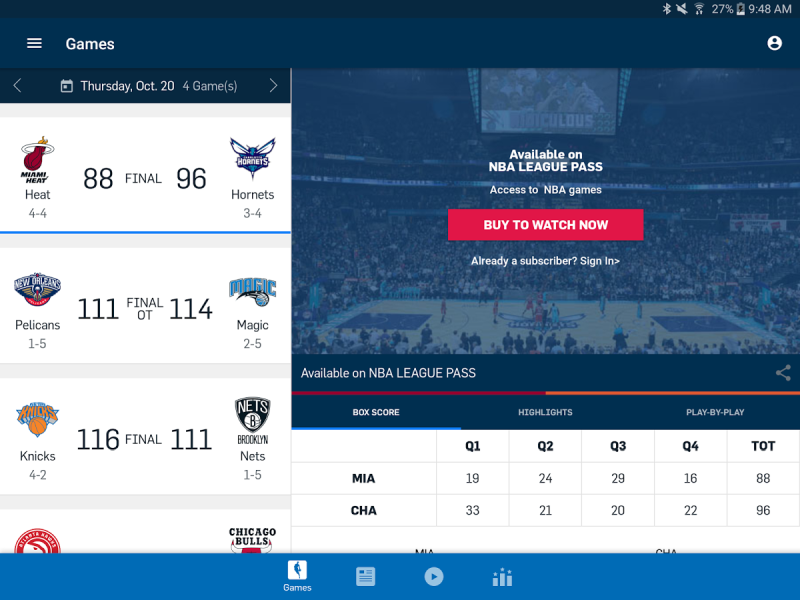
The NBA and NFL have both developed really good apps, providing live streams, video content, news and stats.
Stats and crucial details
Statistics and big data are extremely important, especially if you work in the sports broadcasting industry. Data is a gold mine for creating extra content for fans, such as stats, visualisations, comparisons, infographics etc… the list could go on.
Screen the data while broadcasting, but also create graphs, graphics and charts to publish on different social channels. Well prepared content will remain evergreen and live for a long time after its original use.
Collaborate with influencers
Collaborations with influencers in your space are a very modern solution. Essentially, by working with the movers and shakers in your environment, however big or niche they might be, will give you extra credibility and position your brand as an expert in your field.
You can collaborate with influencers in many ways: asking them for pre/post broadcast comments, involving them as expert panelists during streams, or by creating in-depth content in partnership. An influencer will provide expertise and give you a very specialised point of view.
Internet = social media
98% of people using the internet are social media users at the same time[6] – and there seems to be almost no life beyond Facebook, YouTube, Twitter or Weibo.
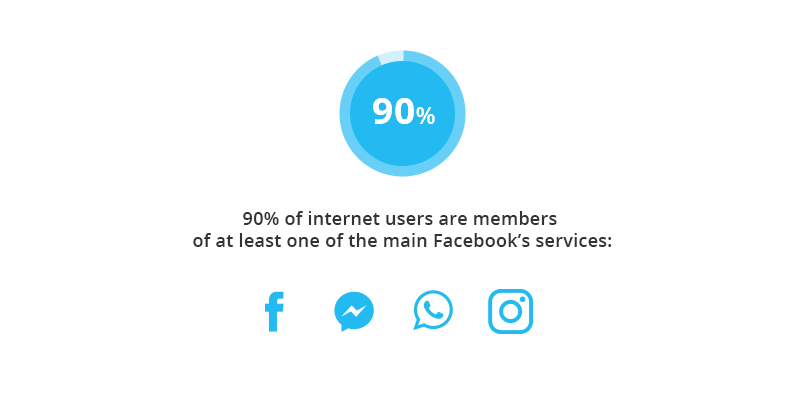
What this means is that your potential viewers are already on the web and probably on social media. As they’re already in these online spaces, you just need to reach them and spark interactions.
The good news is that potential viewers are likely to go where the good content is. So, alongside your awesome social broadcasts, share clips, create cool GIFs, publish polls, and ask your audience what they think and how they feel towards the content you’re sharing and what you’re saying – all the while encouraging conversations.
Go the extra mile!
Creating a wide range of versatile content can be time consuming and challenging. But, if done well, extremely rewarding at the same time. You might not have the budget and resources to cover all of the above solutions. But doing the social broadcast is surely the first step to take. Everything else is up to you!
[2] Nielsen Total Audience Report, Q1 2017. Daily time spent on TV, hr:min (Live+DVR/Time-Shifted): Generation Z, 2:18; Generation X, 4:38; Baby Boomers, 6:42
5 sports clubs keeping fans excited with creative video content
Sports fans are a unique bunch. They consist of people able to name an entire trophy-winning team from back in the 60’s, to the sort willing to go to another continent to see their team, sometimes in the knowledge they could get heavily beaten.
Thanks to the development of the web, the last 15 years have enabled the most popular clubs to get closer to many new fans – now only a click away. However, the majority of these new fans might never get a chance to see their favourite team in person. This situation is making club owners and marketing managers face a new challenge: how to maintain the interest of millions of fans who are living thousands of miles away? These fans are often unable to visit the stadium to see games or watch on TV, while just selling merchandise to them is far too short-sighted as a strategy.
Interesting read: Reach new fans by going social
To nurture fans, and keep them engaged and committed, surely you need to give them something more? The answer for many clubs is to make all fans across the globe feel like part of a wider community. But how? This is when creative video content and social media come into play!
In this blog, I’ll walk you through the best examples of video content produced by some of the most popular sports team in the world. But, before we start, let’s find out…
…how are fans consuming sports content?
The stats tell us that 53% of global internet users watch sports coverage or highlights. That’s a tremendous amount of people – with 39% choosing PCs and laptops to see their favourite teams plays; while 36% watch on mobiles and 15% on tablets[1].
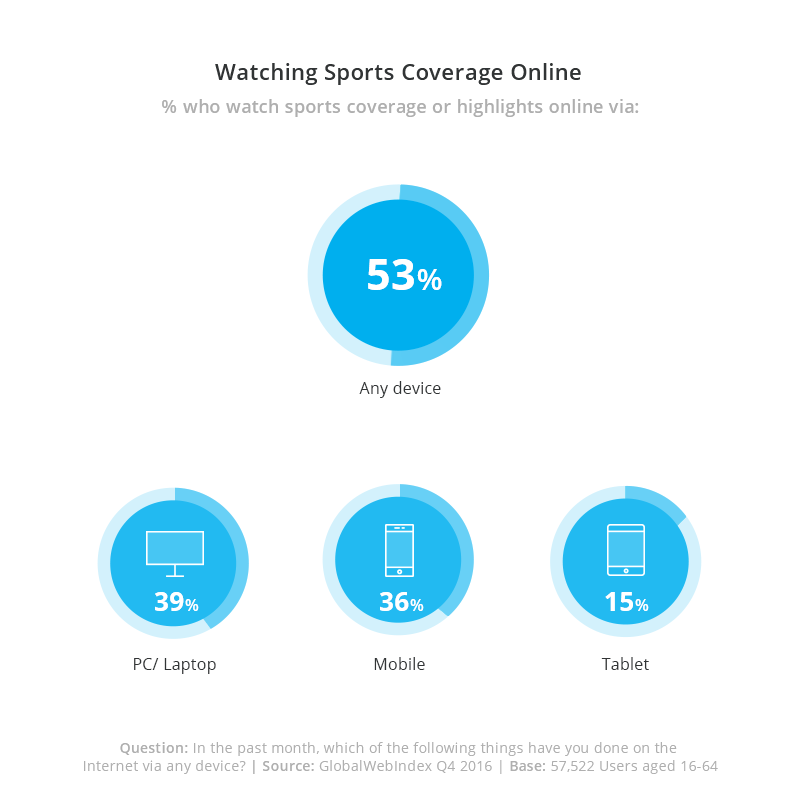
It’s pretty obvious that internet users worldwide are looking for sports content and using a range of devices to do so. So, it’s worth adjusting your content to fit different screen sizes, as well as the aspect ratio requirements of each social platform.
Right, let’s now look at some cool examples of unique content, created by popular sports clubs.
AS Roma (Italy, Serie A)
The Italian football club from Rome is well known around Europe. But their fan base is smaller than other, top-notch clubs like Real Madrid or Chelsea. However, their efforts to create a comprehensive club TV channel is impressive. It’s well worth a mention here.
AS Roma offer their own traditional TV channel, but it is also available through their website for fans outside of Italy. It provides info about daily life at the club – training updates, chats with guests, replays of historical games and a frequent look back at the club’s legendary players. Live broadcasts run from Monday to Saturday in the morning.
Roma also offer a paid, premium version – called Roma TV+. It includes live video content, national and international games, and an on-demand service featuring past games and highlights.
Overall, the club has put in a lot of effort to make their fans well informed about the club and everything going on around it. Even the youth section has its own, dedicated programme – Punto Giovani. You can see that content produced for Roma fans is top quality, with programme specials often involving players as hosts and guests.
New England Patriots (United States, NFL)
While the NFL is huge, its broadcasting deals are complicated. For example, not all games are broadcast nationally on TV. Usually, there’s only one game shown nationally in each set of games – on Thursday, Sunday and Monday nights. The rights to stream games in the current season have been signed by five linear TV channels. At the same time, these channels are streaming games through the internet thanks to their paid platforms. Because of these licenses, clubs don’t have ready-made match content to show to their fans and can find it extremely hard to keep fans updated as a result.
Despite the above, the New England Patriots have really upped their game. Through their official website and YouTube channel they show video content such as game highlights, press conferences, and interviews with players and coaches. Videos are largely produced by external broadcasters, not by the club itself. However, the club’s YouTube channel is its home for in-house produced content, with Patriots players often playing an important role.
Fans get to see many humorous and interesting programmes involving players, such as visits to hometowns or lessons in game tactics.
The Patriots is a great example of content produced on an in-house budget but with great production values and interesting stories to tell. Fans can meet their idols and learn about their interests. This way, the New England Patriots are keeping their fans engaged with the club and its players, not only during games.
FC Barcelona (Spain, La Liga)
FC Barcelona is probably the most popular club in the world (sorry Manchester United!). While this is great news for the club, it presents a challenge to keep global fans interested all the time.
Obviously Barcelona games are more accessible – such as La Liga, Copa del Rey, Champions League, abroad tours etc – all of which are more widely broadcasted by many TV stations and digital broadcasters. The club itself also produces tons of its own video content. What’s worth of mentioning is that this content is not only dedicated to the first team.
You can see women’s games in the Spanish and Champions League, second team training sessions and youth academy football via the La Masia complex. Also shown are Barca fans having fun during matches, interviews with players and lots of Lionel Messi!
Barca also use YouTube to broadcast various events, like games involving the Barca Legends (a joy to see Ronaldinho, Kluivert and Rivaldo playing together!), as well as club updates such as contract renewals by key players.
The YouTube channel is updated frequently and loaded with action. While it’s unable to stream premium content because of broadcasting deals, the Barca media team do an amazing job and still have plenty to show. And fans around the world love it!
Boston Celtics (United States, NBA)
The Boston Celtics are the most successful team in the history of the NBA, responsible for 24.3% of all championship titles[2]. While the Celtics are unable to stream games to its Facebook feed or YouTube channel – because the rights are reserved for premium, paid services – they still have a lot to show.
The Celtics host video content on their official website, YouTube channel and Facebook page. Even though there are no live games, you can find a lot of action, highlights and interviews with players, straight from the pitch. However, this is what most teams are doing, so what Celtics content really stands out?
Specifically, the Celtics offer a lot of videos to promote their activity amongst its community of supporters. They help veteran soldiers, and promote health and fitness among its youngest fans. This is a great way to show that the NBA team is not only about money, contracts and breaking records, but it has strong community links built around the club.
However, my favourite type of Celtic’s video is the one called ‘Bad jokes’. It’s a simple format that shows paired players telling each other bad jokes! It’s completely silly, but at the same time just nice and refreshing to see professional sportsmen having fun. Priceless!
Canadiens de Montréal (Canada, NHL)
Because the NHL’s streaming rights – just like the NFL or NBA – are usually reserved for the biggest players in broadcasting, the league’s clubs tend not to produce content of their own. Most videos from popular NHL teams are just interviews or highlights – which is cool. But Canadiens de Montréal are different!
Someone in the Canadien’s video production team obviously has a lot of great ideas on how to involve players and bring some quality to their content. Despite the lack of game action and highlights, their YouTube channel is an extremely engaging place. They’re using multiple and diverse formats to reach their fans, and it’s working – they have the biggest number of YouTube subscribers amongst all NHL teams.
So, what’s so good about the Canadien’s video content?
If something seems crazy but it’s working – it’s not so crazy!
Sports video content is not only about the games!
There’s no doubt fans watch games for the thrill and emotion of live action – the scoring of a goal or winning a game. But there’s still a lot to show outside of the games. Digital platforms like YouTube or Facebook are perfect to show content aside to a club’s more formal digital roadmap.
A richer array of content can help larger clubs to build a positive PR image, increase reach, monetise viewership independently from major broadcasting contracts and keep the community up to date with club life.
Similarly, content produced by smaller clubs can draw in new fans, nurture an existing fan base and monetise digital content. Perhaps this sort of content will be a first in their history for many smaller clubs.
No matter how big your club or organisation, having this kind of video content will offer an amazing addition to current live broadcasting arrangements and existing marketing activities. Simply take look around your environment and explore interesting things going on. I bet there’s a lot of cool content you can learn from and begin to show yourself!
Social media and live sports: a modern love story
Ever considered Mark Zuckerberg to be a big fan of a cricket? No? Me neither. But I’m not surprised that Facebook was super-eager to pay $600 million+ for the rights to broadcast cricket games from the Indian Premier League (IPL).
The IPL has been an amazing success. Founded in 2007, with its first T20-style game played only a year later, it already has a huge following. What’s really impressive is that the league’s following continues to grow, ever-expanding to more and more fans globally. Since 2008, the audience for IPL games has risen 254 percent! [1]
Another interesting fact is that, in 2010, the IPL was the first ever sports event to broadcast on YouTube. It’s also a sport that delights its fans with initiatives such as the VIP Box and stump and umpire hat cams. So, it’s no wonder Facebook saw a good fit with its business and wanted a piece of the action.
However, while Zuck and his team were keen to jump into the sports world and emerging markets, the IPL bid was not successful for Facebook. They lost to Star India, a television company that paid $2.6 billion for rights to broadcast games via TV and digital.
What was behind Facebook’s bid?
Why exactly were Facebook eager to pay over $600million for rights to broadcast a sport that isn’t even that popular in North America or Europe (excluding the UK)? There are a few reasons why:
- Most popular leagues – such as the NBA, NFL, MLB – have signed recent long-term deals and there are no current opportunities to obtain rights.
- The IPL has grown and continues to grow, not only in India. The IPL format is proving extremely popular globally, while cricket is widely considered one of the most popular sports in the world
- Facebook probably viewed the IPL as an amazing opportunity to gather experience, especially as they’re not (yet!) considered a digital broadcaster.
- Zuckerberg and his team know that sports on social media will form the bedrock for live streaming’s future success.
Facebook aims big
While Facebook was unable to win the race for IPL rights, they’ve sealed other interesting deals in the recent past. In last two years, they’ve bought rights and were responsible (fully or partially) for digitally broadcasting games in the following leagues [2]:
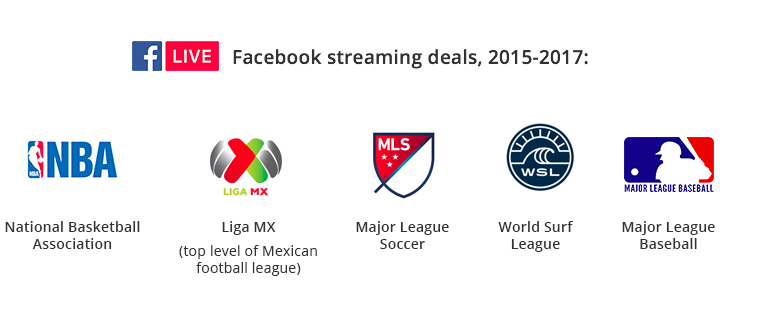
Conditions related to each of the above deals varied depending each sport’s popularity, the number of games etc. Games were usually streamed via the Facebook page of the relevant organisation, with stream sometimes limited geographically. But there’s no doubt that Facebook’s activity has started to position the social platform as a sports broadcaster in the making.
At this point, it’s worth mentioning the new Facebook platform, Watch. Launched in August 2017, it is a video service that hosts original content produced by Fox, Buzzfeed, Discovery Communications and Walt Disney, amongst others.[3]
For now, it is available in US only, but it’s only a matter of time when it will be available in other markets. Facebook Watch is undoubtedly a further, clearer statement about the company’s broadcasting future, with sports broadcasts and sports-themed shows part of its mix.
It’s not only Facebook fighting for rights
The battle for rights and ultimately audience share is not settled yet. There are many players striking deals:
- In April 2017, Amazon signed a deal to broadcast NFL games on its Prime service.
- Before Amazon, Twitter had rights to American Football, with the record game between Oakland Riders and Kansas City Chiefs watched online by 3.1 million at its peak; versus 17.4 million viewers via traditional TV. Funny fact: 12% of viewers weren’t even logged in to Twitter![4]
- CBS is an interesting example of a traditional broadcaster who’s creating a digital business in parallel. While broadcasting the NFL to its core TV audience, the channel also uses its OTT service – CBS All Access – to broadcast games digitally.
- Verizon Wireless paid $21 million for the rights to exclusively show the NFL game between Baltimore Ravens and Jacksonville Jaguars at London’s Wembley Stadium. If this isn’t absolutely crazy, we need to redefine ‘crazy’!
Why should you invest in broadcasting to social media?
On the face of it a simple question – why should you invest in broadcasting to social media? – but there are many ways to answer:
- Live video has the ability to improve all vital KPIs for social media: engagement rates, reach, views, and more.
- Online video content ad sales are growing faster than sales in traditional TV – 17% versus 4% respectively in 2016.[5]
- Younger generations are steadily moving to digital mediums as cord cutting gathers pace.
- In emerging markets like India, Thailand and Brazil, 25% of consumers are at least 14 years old, compared to 16% in developed markets. In only a few years these consumers will develop a heavier influence on markets.[6]
- For sports leagues, clubs and events outside of the top tier, digital broadcasting is a huge opportunity to engage with extremely loyal fans and reach out to new viewers world-wide. For example, the Henley Royal Regatta benefits from the innovative work of sports production company, Sunset+Vine, who use Tellyo to live stream the event to social media and create immediately shareable social video clips.
- In case of Twitter, let the numbers talk:
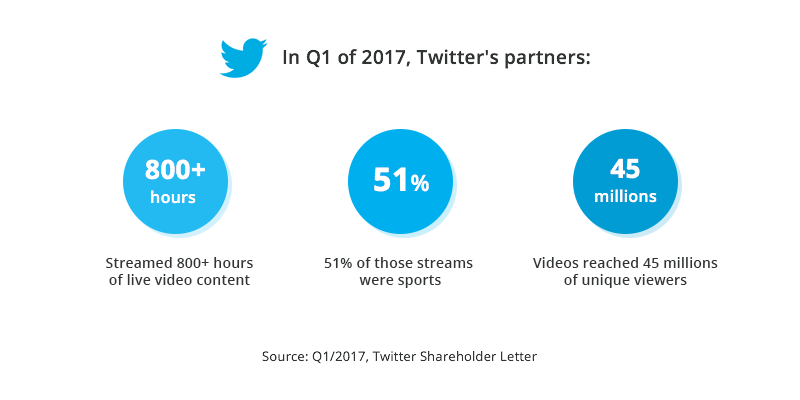
A quick note of positivity: the social media streaming market is still far from crowded and there’s plenty of room for a growth. This has never been truer for the companies, teams, associations or sport federations that are much smaller than Facebook, but who want to punch above their weight.
Social media and live sports – the perfect match
Social media platforms are natural extensions for TV broadcasters specialising in sports. But the social and online platforms themselves are muscling in, too. Big players like Twitter, Amazon and Facebook will continue to provide premium sports content to their vast audiences. They’re even proving hard to beat when it comes to buying (such as NFL streaming rights).
Yet, across the internet there’s plethora of sports fans happy to watch the sports they love. Even if not an entire game, these fans search out highlights, video summaries and blooper compilations. There is a golden opportunity to make these fans happy and show them what they want in an environment they love – the web.
So, what should you do? Simply include live streaming to social media and the creation of shareable video clips in your online strategy. And just go for it, champ!
Sources:
A recipe for video content success: Lonzo Ball and the Summer League buzz
While it’s not everyone’s favourite, partly due to being played in the silly season, this year’s NBA Summer League was truly special. Lonzo Ball was the star earning MVP status on the court, while his father courted controversy off it. The surrounding buzz led to record viewing figures – with six of ESPN’s seven most-viewed games featuring the LA Lakers draft star.
ESPN proved willing to run with the Lonzo hype and the buzz his father, LaVar, was able to build around him. The channel struck gold with the duo, and their presence helped to build a buzz around the Summer League.
Some of the factors that helped build a buzz:
- A superstar in the making
There’s no doubt, Lonzo is a superstar on the rise. He has outstanding skill and is an unusual size for his position, which makes him an interesting proposition. It didn’t hurt that he brought passion and emotion to the court in front of big crowds in the stands and on TV, making him the Summer League’s Most Valuable Player.
- Lonzo, the lead story
Matching his performances, Lonzo maintained a position as the most written-about player throughout the Summer League. Media Cloud stats tell the story – he outpaced other players with 702 mainstream news stories, more than the 2nd and 3rd players combined.
- LaVar, a slice of controversy
There’s no doubt that “a ton of the attention Lonzo receives stems from his brash, outspoken father, LaVar,” according to a fantastic article on the FiveThirtyEight website. As he tried to bolster his family’s brand value any way he could, one of LaVar’s standout comments was to claim he was a better basketball player than Michael Jordan. Tweeters used #lavarballsays to mock him (ironically adding more fuel to the selfless promotion of the Ball name).
- The media were kept guessing
With Lonzo yet to sign a shoe deal with one of the major brands, masses of media attention surrounded what sneakers he would wear. This speculation was only encouraged by the Ball family releasing their Big Baller Brand shoes. So every time Lonzo put on a different pair of sneakers, people would be asking is it another marketing ploy?
What was the recipe for ESPN’s success?
ESPN fully capitalised on the buzz surrounding the Summer League. By combining TV broadcasts with video content and social media activity, the channel was able to engage its audience and even make some good gains. For example, 2017 Google Trends data shows huge increases in searches related to ‘NBA Summer League’.
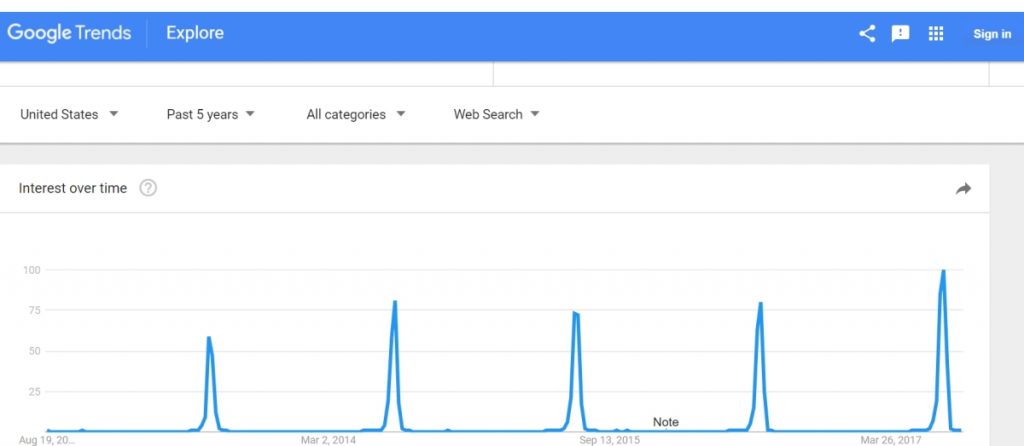
Google Trends for “NBA Summer League” term popularity
ESPN seemed to get its mix of ingredients just right.
- Great timing
The silly season is usually a bad time to break records. But the game between two great teams (Boston Celtics vs LA Lakers) and the duel between draft picks 2 and 3 (Lonzo Ball of the Lakers vs Jason Tatum of Celtics) presented opportunities for ESPN.
To hype the game, ESPN broadcasted a three-part documentary – Best of Enemies – exploring the Celtics/Lakers rivalry as part of its 30 for 30 series. The game itself was the most-watched Summer League game ever, with over 1.1million views on ESPN.
- Tons of shareable content dedicated to Lonzo Ball
Through content, ESPN were able to build a narrative thread that resonated with fans. It managed to maintain the hype surrounding the lead star, presenting Lonzo Ball as the future superstar and maybe as good as his father claims he is!
More than 1,000 articles and videos dedicated completely or partially to Lonzo or other Ball family members have also been created by ESPN.
- Big characters can add to the story
Lonzo Balls’ father, LaVar, was definitely one of the stars of the Summer League. You can dislike him, but the hype around his son is definitely his success. His opinions also get him airtime. On ESPN’s First Take Show, LaVar gets into a heated debate regarding his views on beating Michael Jordan in a game of one-on-one!
You may not have a Lonzo in your locker, or even want a LaVar on your team! But I hope you can take away some of the ingredients that created such a buzz around the Summer League and made it such a success.
Get inspired: compelling examples of sports brands using video content
When it comes to online video, audiences have developed a highly sophisticated filter. They can easily differentiate sterile marketing products from content made with real passion.
Cutting through this filter can be a challenge. How can you ensure your well-produced, professional and inspiring stories stand out? How do you make them sincere and genuine for your audiences?
There are lessons to be learned from other sports brands. Here are some examples of videos made with true passion and dedication.
Urbex by Red Bull
Red Bull is all about giving you energy to increase performance. With its Urbex videos the brand lives its promise, showcasing urban explorers performing at the edge, sometimes literally! These explorers risk life and limb doing stunts on the most extreme of man-made structures. Strictly off-limits, these forbidden structures might be a massive skyscraper in Dubai, a cosmodrome in Kazakhstan or abandoned tunnels below a big city.
While Red Bull’s content is always avant-garde, the Urbex series is some of the most epic video content ever produced. Each 40-minute episode focuses on two or three urban explorers as they scout their structures, and plan and perform mind-blowing stunts. If you suffer from a fear of heights, you might want to stay away. If not – prepare to collect your jaw from the floor!
Lesson to take away: remember the DNA of your brand, live its promise and keep it real!
ParaTough by the Canadian Paralympic Committee
Paralympic sports have until recently existed on the periphery. That’s until organisations like the Canadian Paralympic Committee (CPC) started tearing down some barriers and redrawing the boundaries.
With its ParaTough videos, the CPC challenged people to re-evaluate how they view people with disabilities taking part in sport. The videos were even able to go further, showing that not only are paralympic sports people working harder but their struggle is actually more heroic. Videos in the campaign show examples of the exercises that helped these heroes reach the Paralympic Games. Will you dare to try at least one of them?
Lesson to take away: engage users by showing them real struggle – the pain, the sweat, the sacrifice. Dare them to take part and better themselves in some way.
This Girl Can by Sport England
Sport England is a UK public body responsible for growing the number of people taking part in sports. It identified a need to empower more women to take up sporting activity and to counteract anxieties and assumptions that might make women feel they can’t get involved.
With its This Girl Can campaign, Sport England empowered women of all ages and ethnicities to do sports and take up general physical activity. Campaign video spots showed everyday women having fun in the gym, at running tracks, on football pitches, in boxing halls, or simply in their backyard! In the videos, the women all look natural, strong and inspiring, which has given the campaign immense credibility and made it a huge success.
Lesson to take away: empower your audience by showing that they can do cool and inspirational stuff.
‘Beauty and the Bull’ by Chicago Bulls
Just like combining apples and oranges – they’re pretty cool separately, but nobody thinks about mixing them together – so it was with the Chicago Bulls and musicals. There are Bulls’ fans and musical fans, but fans of these two things? Not so likely.
But when the six-time NBA title winners prepared a musical for their fans, it was a huge gesture and extremely well received. Produced using smartphones and Snapchat, ‘Beauty and the Bull’ was a three-minute story told through short-form videos – each clip lasting only a couple of seconds. It wasn’t the best, most cutting-edge production of all time, but fans were positive in their feedback. While we don’t expect to see Real Madrid making their own Snapchat version of Don Quixote, the idea was cool and executed nicely in an authentic way. You may not like it, but you can’t deny it’s a fresh and innovative idea to use.
Lesson to take away: sometimes it’s good to create something completely new, just from the bottom of your heart. Fans will appreciate it!


